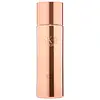What's inside
What's inside
 Key Ingredients
Key Ingredients

No key ingredients
 Benefits
Benefits

 Concerns
Concerns

 Ingredients Side-by-side
Ingredients Side-by-side

Water
Skin ConditioningDipropylene Glycol
HumectantButylene Glycol
HumectantGlycerin
HumectantPEG/PPG/Polybutylene Glycol-8/5/3 Glycerin
HumectantPPG-26-Buteth-26
Skin ConditioningGlycoproteins
Skin ConditioningPanax Ginseng Root Extract
EmollientEquisetum Arvense Extract
AstringentPropylene Glycol
HumectantPEG-40 Hydrogenated Castor Oil
EmulsifyingHamamelis Virginiana Leaf Extract
Skin ConditioningBorago Officinalis Seed Oil
EmollientLactobacillus Ferment
Skin ConditioningBisabolol
MaskingRetinyl Palmitate
Skin ConditioningAscorbyl Palmitate
AntioxidantTocopheryl Acetate
AntioxidantSaccharomyces Cerevisiae Extract
Skin ConditioningHydroxyethylcellulose
Emulsion StabilisingEthylhexyl Methoxycinnamate
UV AbsorberTocopherol
AntioxidantCaprylic/Capric Triglyceride
MaskingLecithin
EmollientDisodium EDTA
Ethylhexylglycerin
Skin ConditioningCitric Acid
BufferingAlcohol
AntimicrobialSodium Hydroxide
BufferingParfum
MaskingLimonene
PerfumingAlpha-Isomethyl Ionone
PerfumingGeraniol
PerfumingCitronellol
PerfumingPhenoxyethanol
PreservativeCI 17200
Cosmetic ColorantWater, Dipropylene Glycol, Butylene Glycol, Glycerin, PEG/PPG/Polybutylene Glycol-8/5/3 Glycerin, PPG-26-Buteth-26, Glycoproteins, Panax Ginseng Root Extract, Equisetum Arvense Extract, Propylene Glycol, PEG-40 Hydrogenated Castor Oil, Hamamelis Virginiana Leaf Extract, Borago Officinalis Seed Oil, Lactobacillus Ferment, Bisabolol, Retinyl Palmitate, Ascorbyl Palmitate, Tocopheryl Acetate, Saccharomyces Cerevisiae Extract, Hydroxyethylcellulose, Ethylhexyl Methoxycinnamate, Tocopherol, Caprylic/Capric Triglyceride, Lecithin, Disodium EDTA, Ethylhexylglycerin, Citric Acid, Alcohol, Sodium Hydroxide, Parfum, Limonene, Alpha-Isomethyl Ionone, Geraniol, Citronellol, Phenoxyethanol, CI 17200
Ingredients Explained
These ingredients are found in both products.
Ingredients higher up in an ingredient list are typically present in a larger amount.
Butylene Glycol (or BG) is used within cosmetic products for a few different reasons:
Overall, Butylene Glycol is a safe and well-rounded ingredient that works well with other ingredients.
Though this ingredient works well with most skin types, some people with sensitive skin may experience a reaction such as allergic rashes, closed comedones, or itchiness.
Learn more about Butylene GlycolGlycerin is already naturally found in your skin. It helps moisturize and protect your skin.
A study from 2016 found glycerin to be more effective as a humectant than AHAs and hyaluronic acid.
As a humectant, it helps the skin stay hydrated by pulling moisture to your skin. The low molecular weight of glycerin allows it to pull moisture into the deeper layers of your skin.
Hydrated skin improves your skin barrier; Your skin barrier helps protect against irritants and bacteria.
Glycerin has also been found to have antimicrobial and antiviral properties. Due to these properties, glycerin is often used in wound and burn treatments.
In cosmetics, glycerin is usually derived from plants such as soybean or palm. However, it can also be sourced from animals, such as tallow or animal fat.
This ingredient is organic, colorless, odorless, and non-toxic.
Glycerin is the name for this ingredient in American English. British English uses Glycerol/Glycerine.
Learn more about GlycerinSaccharomyces Cerevisiae Extract comes from a yeast used in fermentation. It has skin conditioning properties due to its naturally occurring peptides, polysaccharides (including beta-glucans), amino acids, minerals, and vitamins.
Clinical research shows formulas that contain this ingredient can improve moisture levels and refine skin texture over time. This is associate with its ability to reduce free-radical activity and protect the skin against environmental damage.
Lab studies demonstrate that some peptide fractions in this ingredient possess antioxidant and anti-collegenase effects, helping to protect the structural proteins in skin and soothing inflammation.
Additionally, this ingredient has been shown to have antimicrobial effects against bacteria associated with acne.
Learn more about Saccharomyces Cerevisiae ExtractWater. It's the most common cosmetic ingredient of all. You'll usually see it at the top of ingredient lists, meaning that it makes up the largest part of the product.
So why is it so popular? Water most often acts as a solvent - this means that it helps dissolve other ingredients into the formulation.
You'll also recognize water as that liquid we all need to stay alive. If you see this, drink a glass of water. Stay hydrated!
Learn more about Water